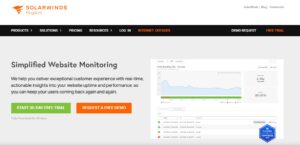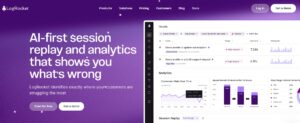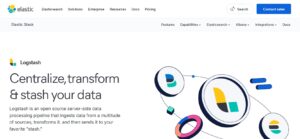Chronosphere platform has significantly advanced in 2025 by adding Chronosphere Logs and enhanced trace control, making it more of a comprehensive MELT observability platform rather than metrics-only. has quickly positioned itself as a go-to platform for managing metrics at scale. Despite its performance at scale, Chronosphere is increasingly seen as rigid and limiting for growing teams. Its SaaS-only model offers no deployment flexibility, pricing remains opaque and difficult to forecast, and its head-based sampling configuration lacks the intelligence needed to retain high-value traces efficiently.
CubeAPM is the top alternative to Chronosphere, offering full MELT observability, OpenTelemetry support, and simplified pricing. It integrates RUM, synthetic monitoring, logs, metrics, and traces, with flat pricing starting at $0.15/GB for data ingestion. CubeAPM reduces observability costs by up to 80%, with no per-user charges.
In this article, we break down the top 7 alternatives to Chronosphere in 2025, comparing tools based on metrics ingestion efficiency, trace sampling strategy, pricing transparency, MELT coverage, OpenTelemetry support, and support for flexible deployments.
Table of Contents
ToggleTop 7 Chronosphere Alternatives
- CubeAPM
- Honeycomb
- Datadog
- New Relic
- Dynatrace
- Signoz
- Sumo Logic
Why Look for Chronosphere Alternatives?
While Chronosphere delivers high-throughput metrics ingestion and alerting at scale, several structural limitations are driving teams to seek more holistic and cost-effective solutions:
1. Steep Learning Curve for PromQL
Chronosphere’s reliance on PromQL (Prometheus Query Language) for metrics querying creates a steep learning curve for users unfamiliar with its syntax, potentially delaying onboarding and incident response.
As one user notes:
“Prometheus/PromQL (which Chronosphere is based on) is still a complex system to learn….if you or your users are new, expect to take some time learning the language and data model.” (G2 Review)
2. SaaS-Only: No Self-Hosting Option
Chronosphere offers no on-prem or hybrid deployment. Teams subject to compliance mandates such as GDPR, HIPAA, or PCI-DSS cannot maintain local data control, making it unsuitable for regulated industries.
3. No Smart Sampling or Trace Analytics
Chronosphere uses head-based sampling which sometimes gives blind decisions as they is no context, and thus a high noise ratio. Unlike, Chronosphere, CubeAPM dynamically retains high-value traces based on latency and error context, thus reducing the noise, and allowing teams to focus on data that matters.
4. Limited Integrations Ecosystem
Unlike platforms like CubeAPM that offers 800+ integrations, Datadog that offer 900+ native integrations, Chronosphere relies primarily on Prometheus exporters and OpenTelemetry for ingesting telemetry data. While this works well for cloud-native teams, it lacks out-of-the-box connectors for popular CI/CD, DevOps, and ITSM tools—such as GitHub, Jenkins, or ServiceNow. This can make integration into broader operational workflows more complex and engineering-heavy.
5. Opaque and Escalating Costs at Scale
While Chronosphere allows users to define how much telemetry to retain, the pricing model is difficult to predict and manage — especially at scale. As one Reddit user noted:
6. Lack of Native Real User Monitoring (RUM) and Synthetic Monitoring
Chronosphere lacks native support for real user monitoring (RUM), which captures end-user experience data, and synthetic monitoring, which simulates user actions to test availability and performance. This is a notable limitation compared to platforms like Dynatrace, New Relic, and Grafana Cloud, which offer these features out of the box. As a result, teams using Chronosphere must rely on external tools for complete end-to-end observability, increasing integration overhead and operational complexity.
Criteria for Suggesting Chronosphere Alternatives
When evaluating alternatives to Chronosphere, we considered both technical capability and operational cost based on a thorough comparison across multiple dimensions. The key criteria include:
1. Full MELT (Metrics, Events, Logs, Traces) Observability
Chronosphere focuses primarily on metrics. Strong alternatives offer unified visibility across all telemetry types — logs, metrics, traces, and events — to support comprehensive troubleshooting and service reliability.
2. OpenTelemetry-Native Support
Tools with native OpenTelemetry support enable standards-based instrumentation without vendor lock-in. These platforms offer better compatibility with modern cloud-native architectures and developer tooling.
3. Flexible Deployment & Cost Transparency
Many teams require on-prem or air-gapped deployment options. We prioritized tools with self-hosting support, transparent usage-based pricing, or flat-rate ingest models over opaque enterprise plans.
4. Smart Sampling & Cardinality Control
Since telemetry data grows fast, especially in microservices environments, we looked for platforms that offer tail-based sampling, anomaly-aware retention, or cardinality management to control storage costs and improve signal-to-noise.
5. Scalable Query & Storage Architecture
Chronosphere is known for scale. Alternatives in this list include solutions with high-performance query engines, hot-warm storage tiers, or decoupled compute and retention — enabling fast querying and cost-efficient storage.
6. SLO-Driven Alerting & Incident Context
We favored platforms that offer SLO-based alerts, service-centric views, and incident correlation to help teams not just monitor metrics, but also understand their impact on user experience and operations.
Chronosphere Overview
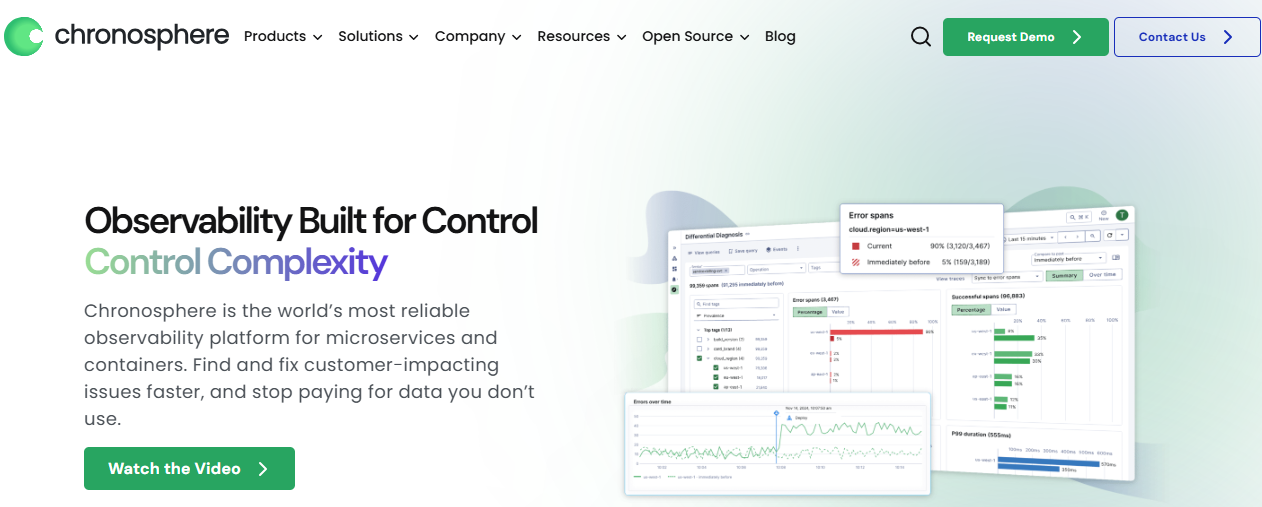
Known For
Chronosphere is a high-performance observability platform built for scale, known for its metrics-first architecture and cloud-native design. Originally developed at Uber and powered by the open-source M3DB time-series database, it is favored by organizations with massive Kubernetes workloads and high telemetry volumes, such as Snap and Robinhood. Its primary strength lies in fast, scalable metrics ingestion with strong controls over metric cardinality.
Chronosphere is best suited for engineering organizations with a strong metrics orientation and complex microservices architectures. However, it may not be ideal for teams seeking full MELT (Metrics, Events, Logs, Traces) visibility, OpenTelemetry-native flexibility, or deployment model control.
Standout Features
1. Dual-Phase Sampling with Datasets & Behaviors
Supports both head and tail-based sampling through dynamic control planes. Teams can define sampling policies based on trace outcome, traffic volume, or service-specific rules, grouped via datasets for centralized trace budgeting.
2. Advanced Metrics Engine (M3DB)
Chronosphere leverages a proprietary version of M3DB to ingest and process massive metric volumes with customizable retention and aggregation logic — ideal for Kubernetes and Prometheus exporters.
3. Prometheus Compatibility with Custom Control Plane
Provides a drop-in replacement for Prometheus with native support for PromQL, while enabling enhanced metric deduplication, cost tracking, and enforced retention via a centralized control plane.
4. Log and Trace Support (Newer)
Chronosphere now supports logs and traces, but they are handled separately from metrics and lack unified dashboards or MELT correlation capabilities. Trace ingest supports up to 100K spans per trace, with filtering and limiting applied post-capture.
Key Features
- Metrics-First Design: High-throughput ingestion and storage built around M3DB, with fine-grained control over cardinality, aggregation, and cost.
- Tail + Head Sampling: Tracing uses combined head/tail sampling with dataset-aware behaviors to control trace retention per team or service.
- Dynamic Configuration via Control Plane: Policies can be updated in real time without redeploying agents or services.
- Prometheus-Compatible: Native support for PromQL, remote-write, and Kubernetes exporters.
- Cloud-Native SaaS: Fully managed platform with auto-scaling backend optimized for Kubernetes telemetry.
Pros
- Extremely performant at metric ingestion scale.
- Prometheus-compatible with added enterprise controls.
- Custom sampling strategies reduce trace ingestion waste.
- Dataset-based sampling enables per-team telemetry budgeting.
- Strong cardinality management for cost control in dynamic workloads.
Cons
- No self-hosting or private cloud deployment — SaaS only.
- No unified MELT experience — logs and traces are siloed.
- Sampling still prone to blind spots (head-based decisions lose context).
- Limited integrations compared to platforms like Datadog or CubeAPM.
- Alerting and incident workflows lack native correlation or automation tools.
Best For
- Enterprises with large Kubernetes deployments focused heavily on metrics.
- Teams looking to replace Prometheus with centralized control over ingestion and cost.
- Organizations willing to trade full MELT support for scalability and SaaS simplicity.
Pricing & Customer Reviews
Pricing:
Chronosphere does not publicly list pricing. However, user reviews indicate that pricing is primarily based on volume of metrics ingested and stored, as well as trace quotas and behavior-based controls. Tailored enterprise contracts are the norm.
Customer Reviews:
- G2: 4.6/5 (Based on 100+ reviews)
Praised for: Scalable metrics ingestion, Prometheus replacement, and cardinality controls.
Criticized for: Lack of unified logs/traces, SaaS-only deployment, limited built-in integrations, and cost unpredictability as usage scales.
Top 7 Chronosphere Alternatives
1. CubeAPM

Known For
Key Features:
1. OpenTelemetry-first Architecture
Native ingestion and visualization for OTEL signals across logs, metrics, traces, and events.
2. Smart Sampling for Cost Control
Includes intelligent head/tail-based sampling and anomaly detection to avoid overpaying for low-value telemetry.
3. Real-Time Distributed Tracing
End-to-end tracing with fast search and correlation for microservices, databases, and external APIs.
4. Custom Dashboards & Alerting
Flexible visualizations, SLO-driven alerts, and root cause analytics for modern DevOps workflows.
5. Multi-Cloud & On-Prem Deployment
Offers both SaaS and self-hosted deployment options with support for air-gapped and compliance-heavy environments.
Standout Features:
Zero Vendor Lock-In
100% OpenTelemetry-based — you control the agent, schema, and pipeline without proprietary formats or black-box agents.
SLO-Based Alerting & Runbook Integration
Built-in alerting that maps to service-level objectives (SLOs) and integrates with PagerDuty, Opsgenie, and Slack.
Hot-Warm Storage Retention
Decouples high-speed querying from long-term retention, optimizing performance and cost at scale.
Pros:
- Transparent pricing with no hidden ingestion or retention penalties
- Simple and fast deployment with Helm, Terraform, or Docker
- Excellent support for Kubernetes and serverless workloads
- GDPR/HIPAA/SOC2-ready hosting options
Cons:
- Smaller ecosystem of plugins compared to legacy vendors
- UI customization options are evolving
- Advanced ML-driven anomaly detection in beta
Best For:
- Mid-sized tech companies and SaaS startups
- Teams migrating from proprietary APMs to OpenTelemetry
- Organizations needing fine-grained cost control and self-hosted observability
Pricing & Customer Reviews:
- Pricing: $0.15/GB for data ingestin
- G2 Reviews: ★ 4.7/5
Users highlight CubeAPM’s cost transparency, fast onboarding, and strong support for OpenTelemetry and custom metrics.
CubeAPM vs Chronosphere:
While Chronosphere focuses heavily on metrics aggregation and scale, CubeAPM delivers complete MELT (Metrics, Events, Logs, Traces) observability with full OpenTelemetry-native pipelines. CubeAPM also provides better flexibility for deployment (SaaS or self-hosted), superior pricing transparency, and smart sampling, which helps teams avoid vendor lock-in and cost explosions. It’s a better fit for teams who want to control their observability stack end-to-end.
Honeycomb
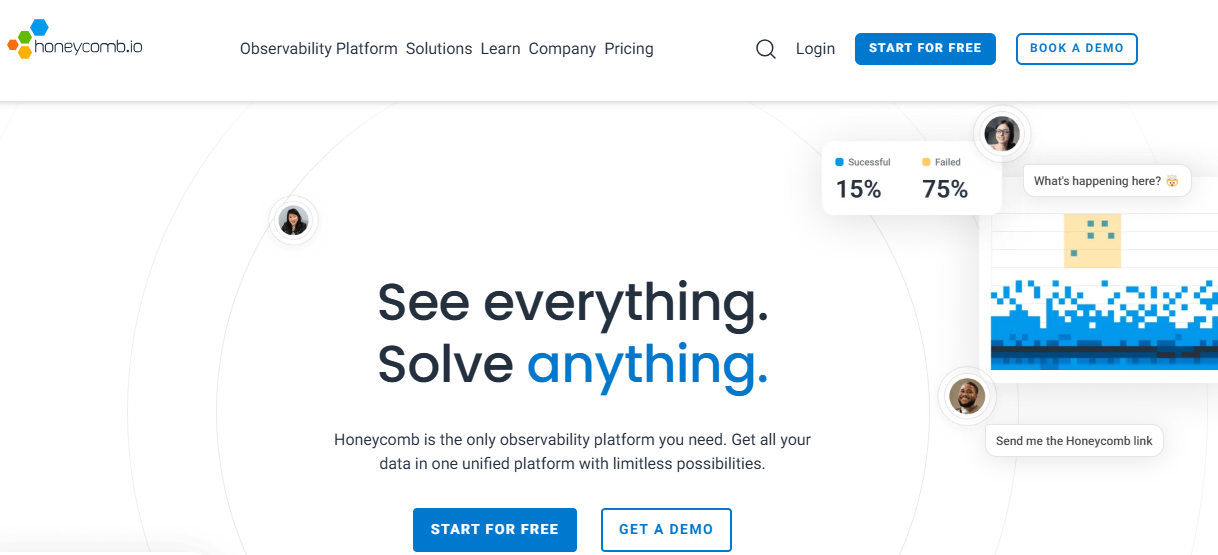
Known For:
Honeycomb is an event-driven observability and high-cardinality trace exploration. Honeycomb pioneered “observability for debugging” and is favored by SREs and developers who need deep visibility into distributed systems.
Key Features:
1. Wide Event Support
Accepts structured events with hundreds of dimensions, making it ideal for debugging edge cases and system anomalies.
2. OpenTelemetry Integration
Supports ingestion of OTEL traces and metrics. Also offers a vendor-specific agent (honeycombio/opentelemetry-exporter) for enhanced metadata tagging.
3. Query Builder
Powerful UI for ad hoc queries using breakdowns, heatmaps, percentile distributions, and grouped views.
4. BubbleUp Debugging
Visual correlation tool that lets users zoom in on outliers in trace or metrics data by highlighting differing dimensions.
5. Service Map & Tracing UI
Real-time flame graphs, waterfall views, and span-level context for distributed tracing across services.
Standout Features:
1. High-Cardinality Performance
Handles millions of unique values per dimension (e.g., user ID, tenant, endpoint) with low latency — ideal for modern microservices and multitenant architectures.
2. Column-Oriented Storage
Optimized for analytical workloads over telemetry data, unlike traditional row-based logs.
3. No Indexing Required
Query across all fields without predefining indexes — reduces configuration overhead and increases exploration flexibility.
Pros:
- Exceptional at debugging complex distributed systems
- Unique UI patterns for exploratory analysis and outlier detection
- OpenTelemetry-compatible with strong SaaS reliability
- Pricing includes generous free tier and event-based billing flexibility
Cons:
- No built-in log management — logs must be sent to third-party services
- Limited alerting and dashboard capabilities compared to Chronosphere or Datadog
- Steeper learning curve for traditional ops teams (due to the event-based model)
- No self-hosted version — entirely SaaS
Best For:
- SRE teams debugging hard-to-catch anomalies in microservices
- Engineering organizations with high-cardinality observability needs
- Teams that prioritize trace/event analytics over traditional logs and metrics
Pricing & Customer Reviews:
- Pricing: Based on events per month — starts with a free tier of 20M events/month, Paid plans: $130/month for 100M events.
- G2 Reviews: 4.6/5
Users love Honeycomb’s developer-focused experience, performance at scale, and debugging depth. Common complaints include limited dashboarding, no log support, and lack of alert routing flexibility.
Honeycomb vs Chronosphere:
Honeycomb and Chronosphere are both modern observability platforms — but with distinct philosophies. Chronosphere centers on metrics-first, cost-optimized SRE workflows, while Honeycomb leads in trace-level debugging and high-cardinality event analysis. Chronosphere supports better alerting and log coverage; Honeycomb excels in deep incident root cause analysis.
3. Datadog

Known For
Datadog is a cloud-native, all-in-one observability and security platform, widely adopted by DevOps teams for its powerful integrations, real-time monitoring, and support for infrastructure, logs, APM, and security via SaaS.
Enterprise-grade full-stack observability across infrastructure, applications, logs, and security. Datadog is widely adopted by large-scale teams for centralized monitoring and correlation across cloud-native and hybrid systems.
Key Features:
1. Metrics, Logs & Traces Integration
Correlates telemetry across services using service maps and flame graphs.
2. Application Performance Monitoring (APM)
Distributed tracing with automatic instrumentation for major languages.
3. Infrastructure Monitoring
900+ integrations for AWS, Azure, GCP, Kubernetes, Redis, and more.
4. Log Management
Centralized logging with Live Tail, rehydration, and advanced search.
5. Security Monitoring
Includes Cloud SIEM, workload security, threat detection, and posture visibility.
Standout Features:
1. Watchdog AI
ML-based detection of anomalies and automatic insights.
2. Synthetics & RUM
Frontend performance monitoring with real user and synthetic data.
3. Service Catalog
Tracks ownership, deployment status, and dependencies.
Pros:
- Best-in-class dashboarding and alerting
- Massive integration library
- Unified view across dev, ops, and security
- Established support ecosystem and uptime guarantees
Cons:
- High TCO: Costs balloon with scale and usage across products
- Opaque pricing: Logs, traces, synthetics, and infra are all billed differently
- No OpenTelemetry-native ingestion — relies on proprietary agents
- Complex billing — frequent complaints about surprise invoices
Best For:
- Large enterprises with complex infrastructure
- Organizations already invested in Datadog’s ecosystem
- Teams needing bundled observability and security tooling
Pricing & Customer Reviews:
- Pricing: APM: starts at $31/host/month; logs – Effective Cost: $0.1/GB + $1.7/M events (15d), synthetics billed separately; Infra Cost; starting at $15/host/month
- G2 Reviews: ★ 4.3/5
Praised for breadth and polish, but users frequently cite cost unpredictability and billing complexity.
Datadog vs Chronosphere:
Datadog offers broader observability features than Chronosphere, including synthetics, RUM, and security tooling, but it’s significantly more expensive and not OTEL-native. Chronosphere provides more efficient metrics processing and cost controls, while Datadog favors deep integrations and a more polished UI for mature teams with budget headroom.
4. New Relic

Known For
Unified observability platform offering logs, metrics, traces, and dashboards in a single interface — often seen as a more user-friendly alternative to traditional enterprise APMs.
Key Features:
1. APM & Distributed Tracing
Tracks application latency, throughput, and errors with full support for distributed architectures.
2. Infrastructure Monitoring
Real-time monitoring of hosts, containers, cloud services, and Kubernetes environments.
3. Log Management
Integrated logging with correlation to metrics and traces. Supports ingestion via Fluent Bit, OTEL, and Logstash.
4. Dashboards & Querying
Custom dashboards built using NRQL (New Relic Query Language) and auto-generated views from telemetry.
5. OpenTelemetry Ingestion
Supports OTEL for metrics and traces but routes it through New Relic agents or collectors.
Standout Features:
1. All-in-One Telemetry UI
Combines metrics, logs, traces, synthetics, and user experience monitoring in one place.
2. Code-Level Insights
Detects performance bottlenecks down to the function/method level for supported frameworks.
3. Proactive Anomaly Detection
AI-powered alerts, baseline deviation detection, and forecasting built into alerting rules.
Pros:
- Single pricing model across logs, metrics, and traces
- Broad support for DevOps tools and cloud services
- Free tier includes 100 GB of telemetry/month
- Friendly UI for cross-functional teams (Dev, Ops, QA)
Cons:
- Pricing can escalate rapidly above free tier
- UI performance degrades with large-scale dashboards
- OpenTelemetry support not fully native — wrapped in NR tooling
- Lock-in risk due to proprietary agents and integrations
Best For:
- Mid-sized companies and tech startups needing all-in-one visibility
- Teams looking for unified dashboards with lightweight setup
- Use cases where quick deployment and low initial cost matter
Pricing & Customer Reviews:
- Pricing: Usage-based — starts with 100 GB/month free. Ingestion based pricing of $0.35/GB + $400/user/month for full access
- G2 Reviews: 4.4/5
Users appreciate its ease of use, transparent pricing, and consolidated UI, but reviews cite sluggish dashboards at scale and steep pricing curves as data grows.
New Relic vs Chronosphere:
New Relic offers more out-of-the-box integrations and an easier onboarding path than Chronosphere. However, Chronosphere is optimized for metrics-heavy scale, cost efficiency, and SRE-centric workflows, while New Relic aims to be a generalist tool. For teams focused on cardinality control and OTEL-native ingestion, Chronosphere may offer better long-term scalability.
5. Dynatrace
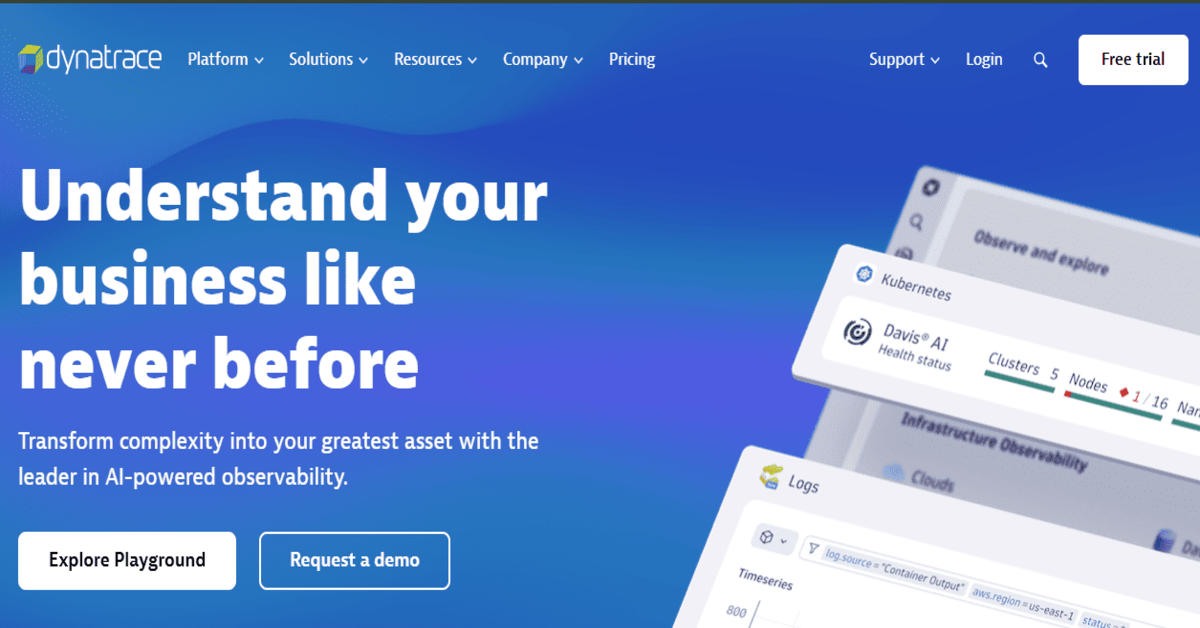
Known For
AI-powered observability with full-stack automation across infrastructure, applications, cloud-native workloads, and user experience — popular among large enterprises for its depth and automation.
Key Features:
1. OneAgent Architecture
A single agent auto-discovers metrics, logs, traces, events, and dependencies across hosts, VMs, Kubernetes, and services.
2. APM & Distributed Tracing
Auto-instrumentation and deep code-level diagnostics for Java, .NET, PHP, Node.js, and more.
3. Davis AI Engine
Dynatrace’s anomaly detection and root cause engine that automatically analyzes billions of dependencies.
4. Log Monitoring
Unified log ingestion, live tailing, and context linking with traces and metrics.
5. Cloud & Kubernetes Monitoring
Native support for AWS, Azure, GCP, OpenShift, and Kubernetes clusters with service topology mapping.
Standout Features:
1. Smartscape Topology Mapping
Real-time dependency maps between services, processes, containers, and hosts.
2. Davis AI Causation Engine
Goes beyond correlation by identifying causal relationships and minimising alert noise.
3. Session Replay & RUM
Captures frontend user sessions, including DOM interactions and errors.
Pros:
- Extremely powerful for large, complex cloud environments
- Unified agent reduces operational overhead
- Excellent AI-driven diagnostics and automation
- Built-in support for frontend, backend, and infrastructure
Cons:
- One of the most expensive APMs on the market
- Proprietary stack — less flexibility with custom pipelines
- OpenTelemetry ingestion supported but not native-first
- Overhead can be high in resource-constrained environments
Best For:
- Enterprises with large-scale, mission-critical infrastructure
- Teams wanting automation, root cause analysis, and all-in-one visibility
- Organizations needing frontend+backend+infra monitoring in a single pane
Pricing & Customer Reviews:
- Pricing: Highly tiered and volume-based. $0.08/hour per 8 GiB host (~$57.60/host/month)
- G2 Reviews: 4.5/5
Users love automation, accuracy, and visualizations, but cite high costs and complex onboarding as drawbacks.
Dynatrace vs Chronosphere:
Dynatrace excels in automated dependency mapping, session replay, and AI diagnostics, while Chronosphere is purpose-built for scalable SRE-focused metrics observability. If your team values automated root cause detection and full-stack coverage, Dynatrace stands out. But for cost-efficient telemetry pipelines and OTEL-native architecture, Chronosphere offers more flexibility and better control over cardinality and spend.
6. SigNoz

Known For
Open source observability built on OpenTelemetry, with an integrated UI for logs, metrics, and traces — often seen as the go-to self-hosted alternative to commercial SaaS platforms.
Key Features:
1. OpenTelemetry-Native
Fully built around OTEL standards. Offers plug-and-play support for auto-instrumentation and custom metrics via OTEL SDKs.
2. APM & Distributed Tracing
Real-time service map, flame graphs, span filters, and trace details out of the box.
3. Metrics Monitoring
Includes Prometheus-style metrics (p99 latency, error rates, throughput) and dashboards for services, databases, and infrastructure.
4. Log Management (Beta)
Centralized logs with live tailing, field filters, and trace-log correlation — still evolving in feature depth.
5. Alerting & Dashboards
Built-in support for creating custom dashboards and rule-based alerts on service performance or metrics.
Standout Features:
1. Self-Hosted Deployment
Docker and Helm-based deployments with full control over data, retention, and performance tuning.
2. Single Pane for MELT
Traces, logs, metrics, and alerts in one UI — unified by service, span, or tag.
3. Open Source with Active Community
Transparent roadmap, GitHub issue tracking, and strong contribution activity.
Pros:
- Native OTEL support — no vendor lock-in
- Transparent and predictable deployment for teams with infra control
- Rapidly evolving features with growing enterprise adoption
- Affordable and scalable with cloud or self-managed options
Cons:
- Log management is still maturing
- UI and alerting less polished than legacy APMs
- Smaller ecosystem and fewer third-party integrations
- Self-hosting may require in-house SRE effort
Best For:
- Engineering teams seeking a self-hosted, open-source OTEL observability stack
- Organizations transitioning from commercial APMs to open tooling
- DevOps teams looking for full MELT observability with low vendor overhead
Pricing & Customer Reviews:
- Pricing: Free for self-hosted. Cloud plans start at $199/month with limits on data retention and ingestion volume. OpenTelemetry data is not sampled unless configured manually.
- G2 Reviews: ★ 4.6/5
Users highlight ease of OTEL onboarding, cost transparency, and developer-first UX. Downsides include log UI limitations and a need for manual scaling effort.
SigNoz vs Chronosphere:
Both platforms embrace OpenTelemetry and cost-conscious observability, but take different routes. SigNoz emphasizes self-hosted flexibility, open source governance, and full MELT coverage. Chronosphere, while SaaS-focused, delivers stronger scale for metrics pipelines and tighter cost control for high-cardinality environments. SigNoz is ideal for teams wanting to fully own their observability stack; Chronosphere excels at optimizing telemetry pipelines at cloud scale.
7. Sumo Logic

Known For
Cloud-native log analytics and security intelligence, with broad support for real-time log ingestion, metrics, SIEM, and compliance use cases. Sumo Logic is often adopted in enterprises with hybrid and multicloud environments.
Key Features:
1. Log Management
Centralized log ingestion, indexing, and search with field extraction, parsing, and alerting.
2. Metrics & Time Series Monitoring
Collects metrics from Prometheus, Telegraf, and cloud platforms with customizable dashboards.
3. Security Analytics (Cloud SIEM)
Detects threats and compliance issues using UEBA, correlation rules, and curated content.
4. Application Observability
Includes distributed tracing, service maps, and pre-built dashboards for apps and cloud services.
5. Ingest APIs & Integrations
Wide support for cloud logs (e.g., AWS CloudTrail, Azure Monitor), container logs, and OTEL-based pipelines.
Standout Features:
1. Cloud-Native Architecture
Built for multitenancy and elastic scale, with hosted retention and automatic indexing.
2. Prebuilt Compliance Packs
Templates and dashboards for PCI-DSS, HIPAA, SOC2, and GDPR compliance monitoring.
3. Search Query Language (LogReduce & LogCompare)
Helps reduce log volume noise and compare logs across deployments.
Pros:
- Strong log search performance with advanced filtering
- Native SIEM and threat detection add-on
- Integrates well with AWS, Azure, and Kubernetes
- Multiple deployment and ingestion options
Cons:
- Expensive at scale — ingestion and retention costs spike fast
- Complex pricing model with multiple SKUs (metrics, logs, SIEM sold separately)
- UI can feel dated and slow with large data sets
- Not OpenTelemetry-native — uses its own agents and pipeline conventions
Best For:
- Enterprises needing a combined log + SIEM solution
- Organizations with strict compliance and audit requirements
- Teams prioritizing log analytics and security visibility over metrics-heavy workflows
Pricing & Customer Reviews:
- Pricing: Based on data volume and retention. Log ingestion ranges between $0.30–$0.50/GB, with additional costs for long-term storage, metrics, and SIEM. Monthly spend can easily hit $5,000+ for mid-size environments.
- G2 Reviews: 4.1/5
Users praise log analytics capabilities and compliance packs, but complain about high costs, query latency, and lack of OpenTelemetry support.
Sumo Logic vs Chronosphere:
Sumo Logic is ideal for log-centric observability and security analytics, while Chronosphere specializes in metrics-first observability at scale. Sumo Logic has deeper SIEM features, but Chronosphere delivers stronger cost controls, faster ingestion, and OTEL-native workflows — making it better suited for teams optimizing for performance and scale in modern SRE environments.
Conclusion
Conclusion: Choosing the Right Chronosphere Alternative
Chronosphere is a powerful tool for teams focused on metrics scale and cardinality control, but it falls short in key areas like log and trace support, OpenTelemetry-native ingestion, and self-hosting flexibility. For teams seeking full MELT observability, transparent pricing, or deployment control, these limitations can be dealbreakers.
CubeAPM stands out with its $0.15/GB flat-rate, full OTEL-native MELT coverage, and flexible deployment model. Honeycomb is ideal for high-cardinality debugging, while SigNoz offers a self-hosted, open-source stack. Datadog and New Relic provide broader suites but at higher cost, and Dynatrace and Sumo Logic bring strength in automation and security analytics. Your best alternative depends on whether you prioritize cost control, trace depth, open standards, or enterprise features.

